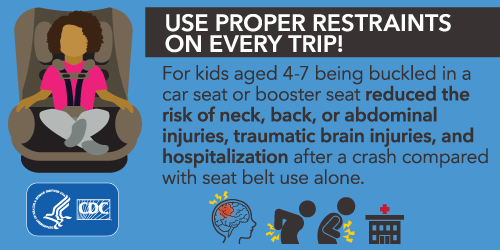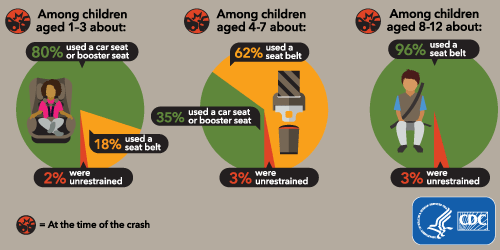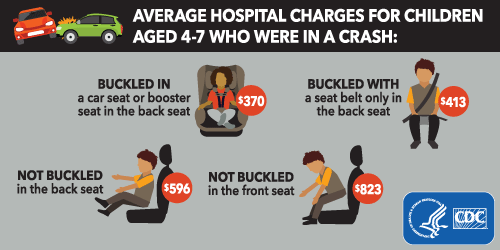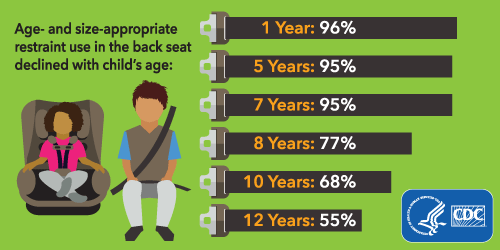Publications
Featured Publication:
Motor Vehicle Crashes, Medical Outcomes, and Hospital Charges Among Children Aged 1–12 Years — Crash Outcome Data Evaluation System, 11 States, 2005–2008
A CDC surveillance summary highlights that proper car seat, booster seat, and seat belt use among children prevents injuries, decreases deaths, and reduces hospital charges. It also confirmed that parents often transition children to the next, less protective, stage of child passenger restraint too soon. With every transition to the next stage of restraint (e.g., rear-facing seat to forward-facing seat, forward-facing seat to booster seat, and from booster seat to seat belt), children are less protected in a crash and the cost of injury increases.
Below is a brief selection of recent CDC publications on seat belts.
CDC Vital Signs links science, policy, and communications with the intent of communicating a call-to-action for the public. CDC Vital Signs provides the most recent, comprehensive data on key indicators of important health topics
- Centers for Disease Control and Prevention. Motor Vehicle Crashes, Medical Outcomes, and Hospital Charges Among Children Aged 1–12 Years — Crash Outcome Data Evaluation System, 11 States, 2005–2008. MMWR 2015; 64(SS08);1-32.
- Centers for Disease Control and Prevention. Vital Signs: Restraint Use and Motor Vehicle Occupant Death Rates Among Children Aged 0–12 Years — United States, 2002–2011. MMWR 2014; 63(05);113-118.
- Centers for Disease Control and Prevention. Child Passenger Deaths Involving Drinking Drivers --- United States, 1997--2002. MMWR 2004; 53(04);77-79.
- Zonfrillo, MR, Sauber-Schatz, EK, Hoffman, BD, Durbin, DR. Pediatricians’ Self-Reported Knowledge, Attitudes, and Practices about Child Passenger Safety. Journal of Pediatrics 2014; 165: 1040-1045. 10.1016/j.jpeds.2014.07.041
- Quinlan K, Shults RA, Rudd RA. Child passenger deaths involving alcohol-impaired drivers: national and state patterns. Pediatrics 2014; 133: 966-972.
- Page last reviewed: November 2, 2015
- Page last updated: November 2, 2015
- Content source:
- Centers for Disease Control and Prevention,
- National Center for Injury Prevention and Control,
- Division of Unintentional Injury Prevention


 ShareCompartir
ShareCompartir







